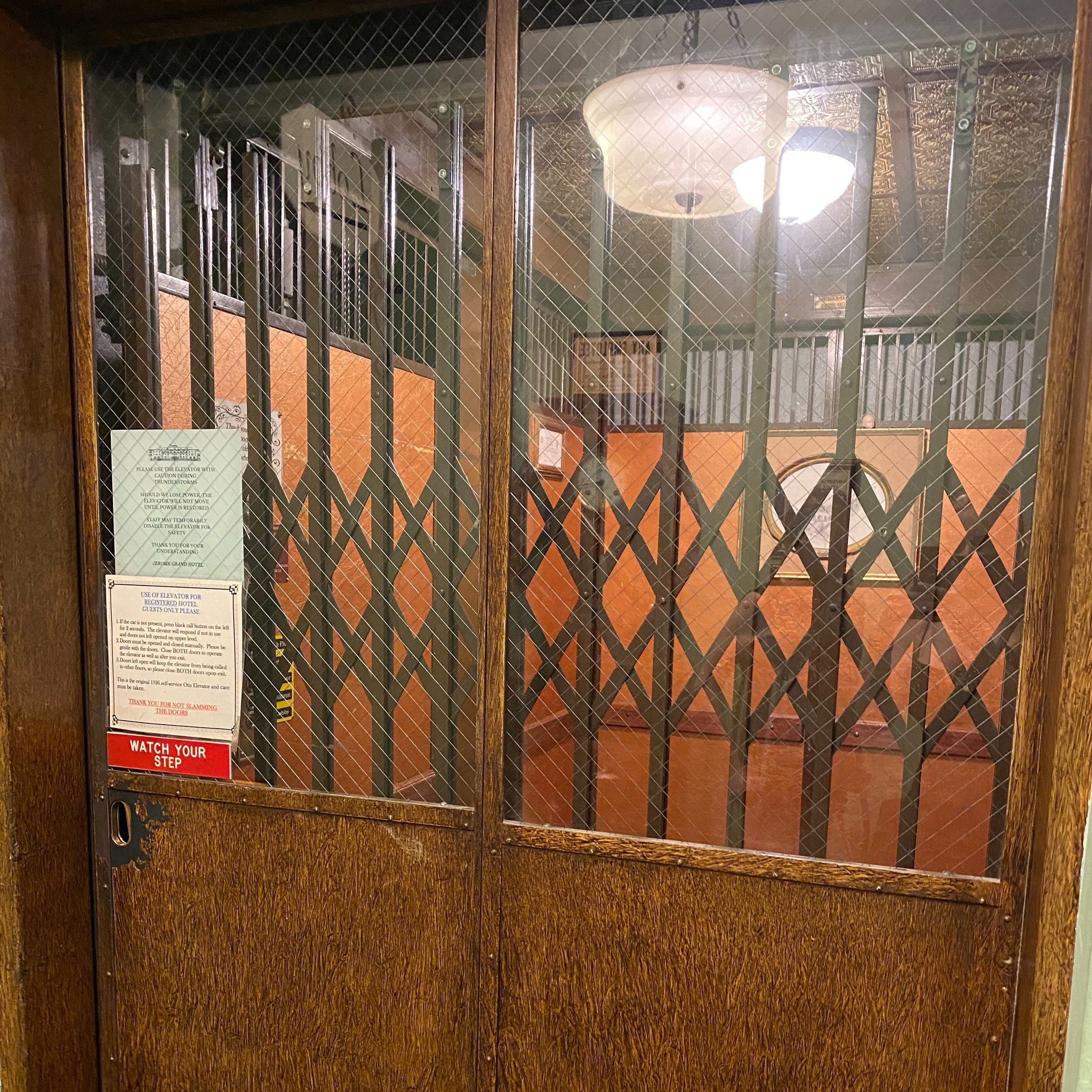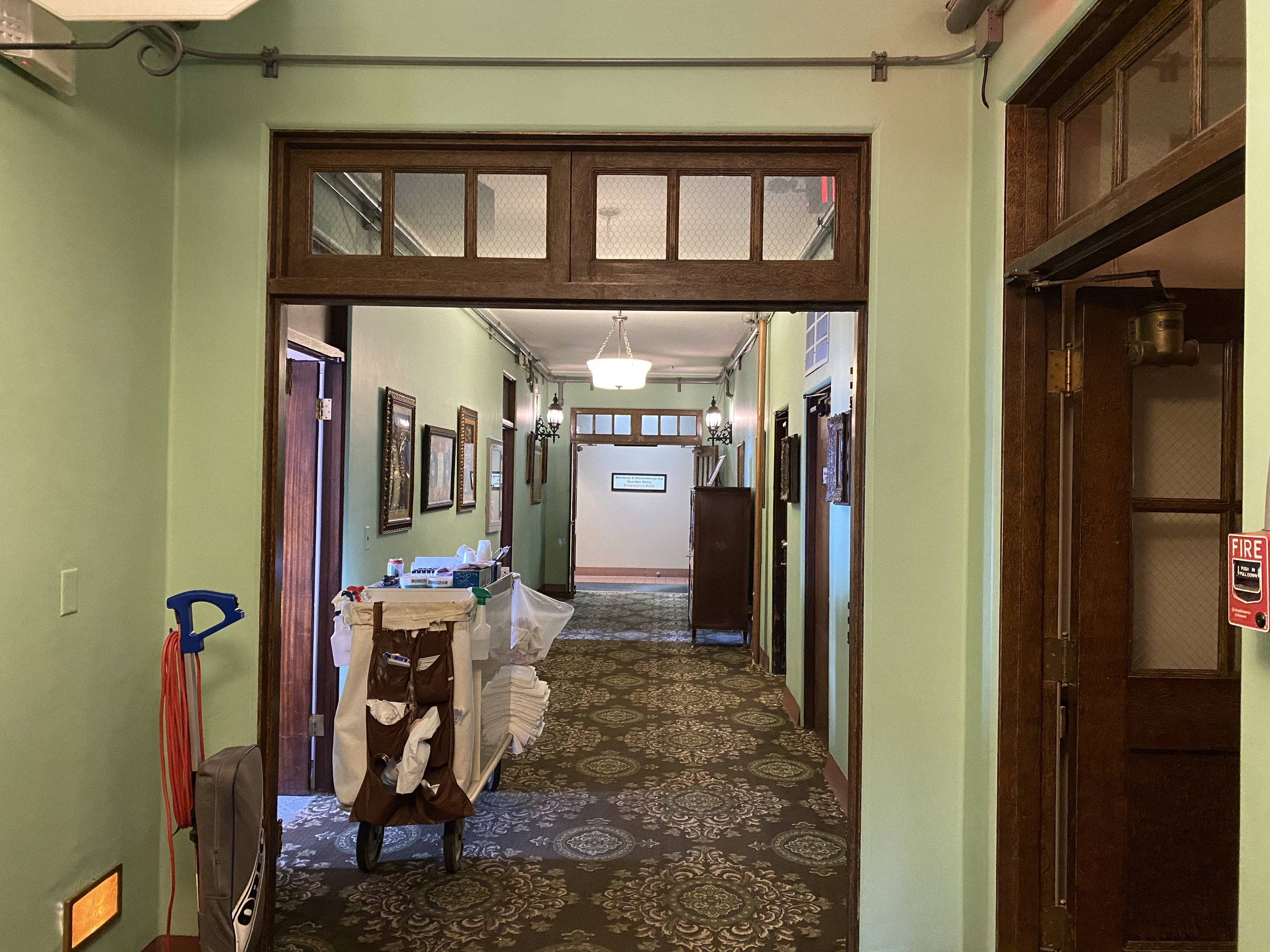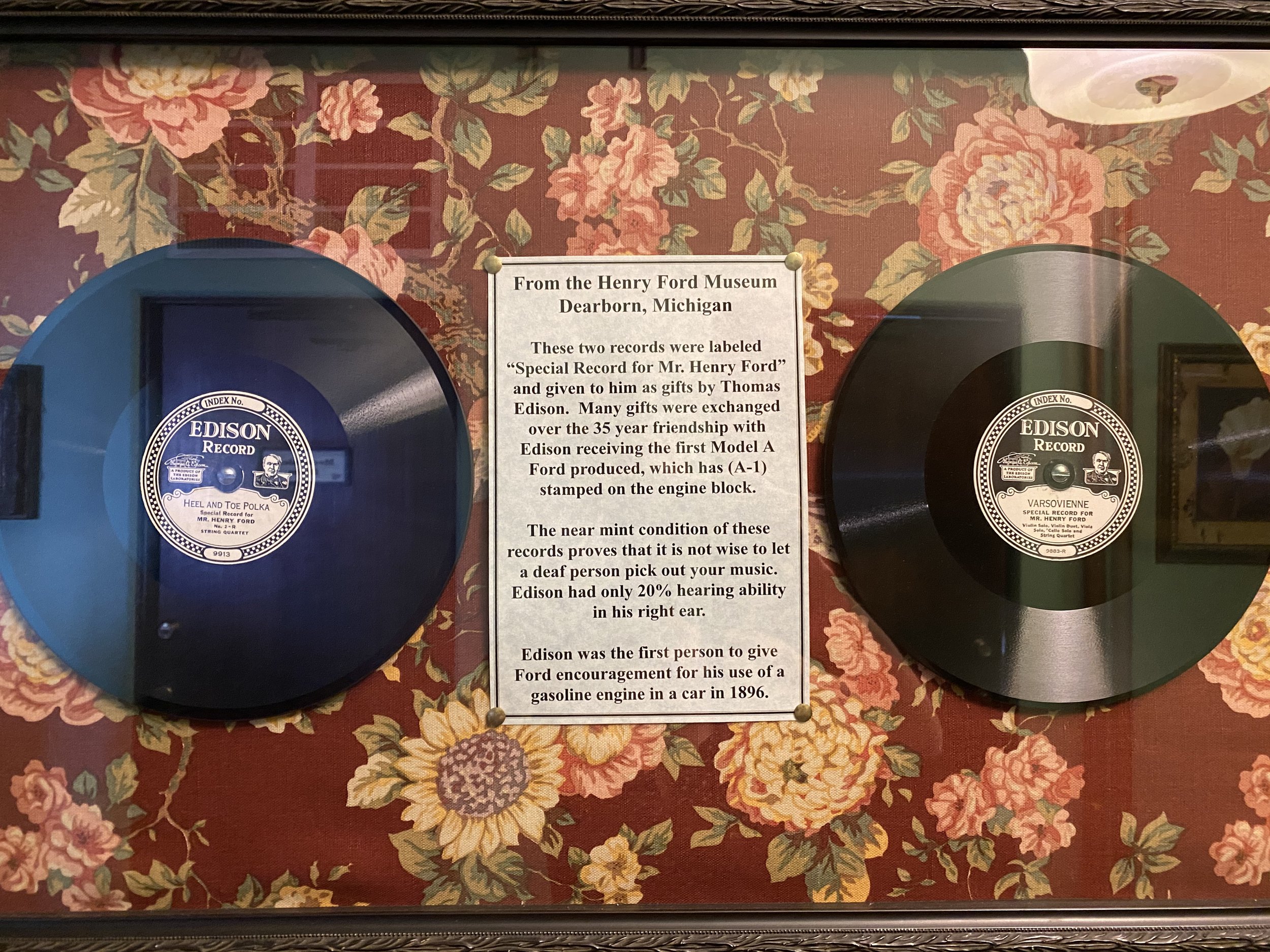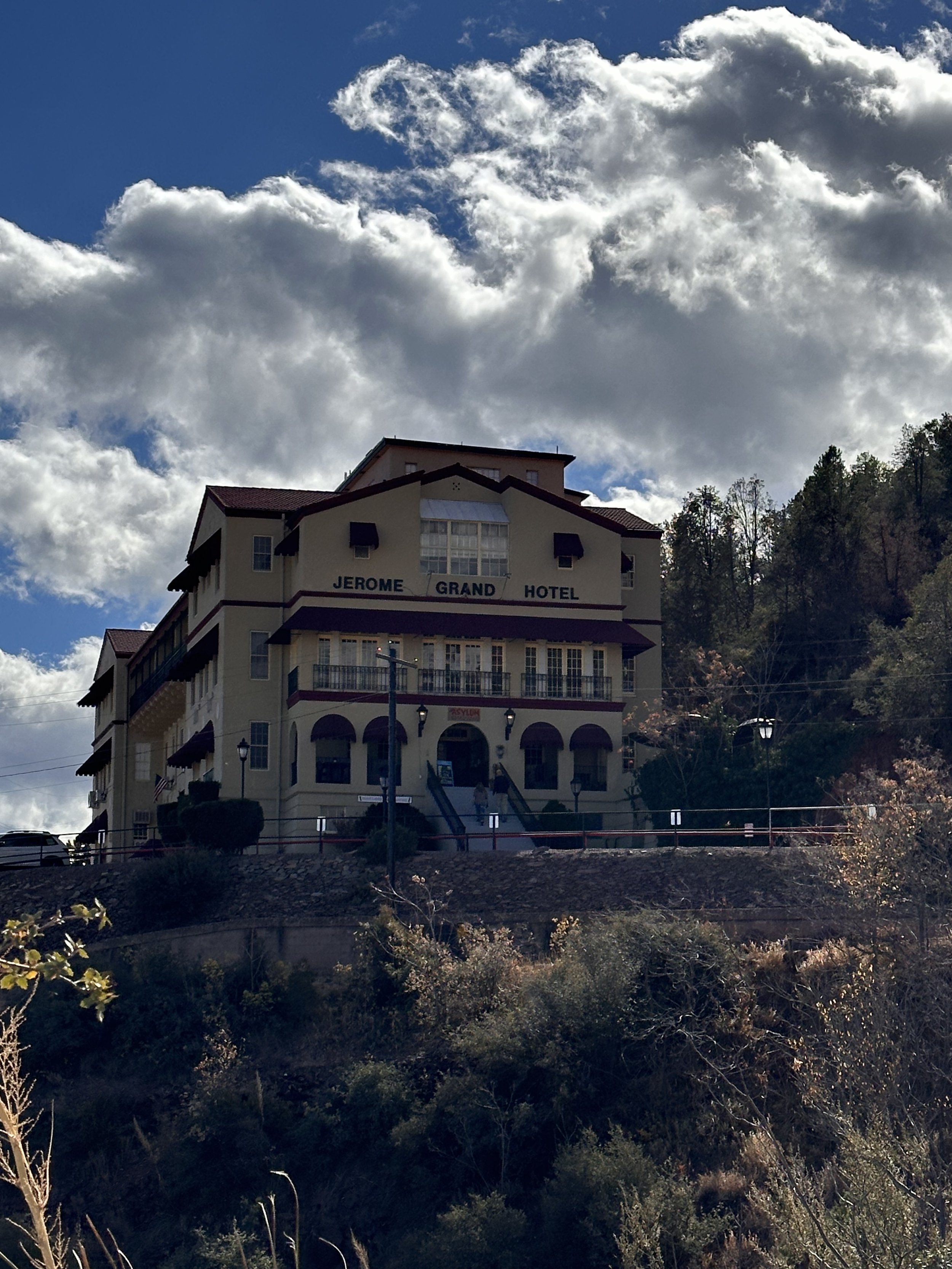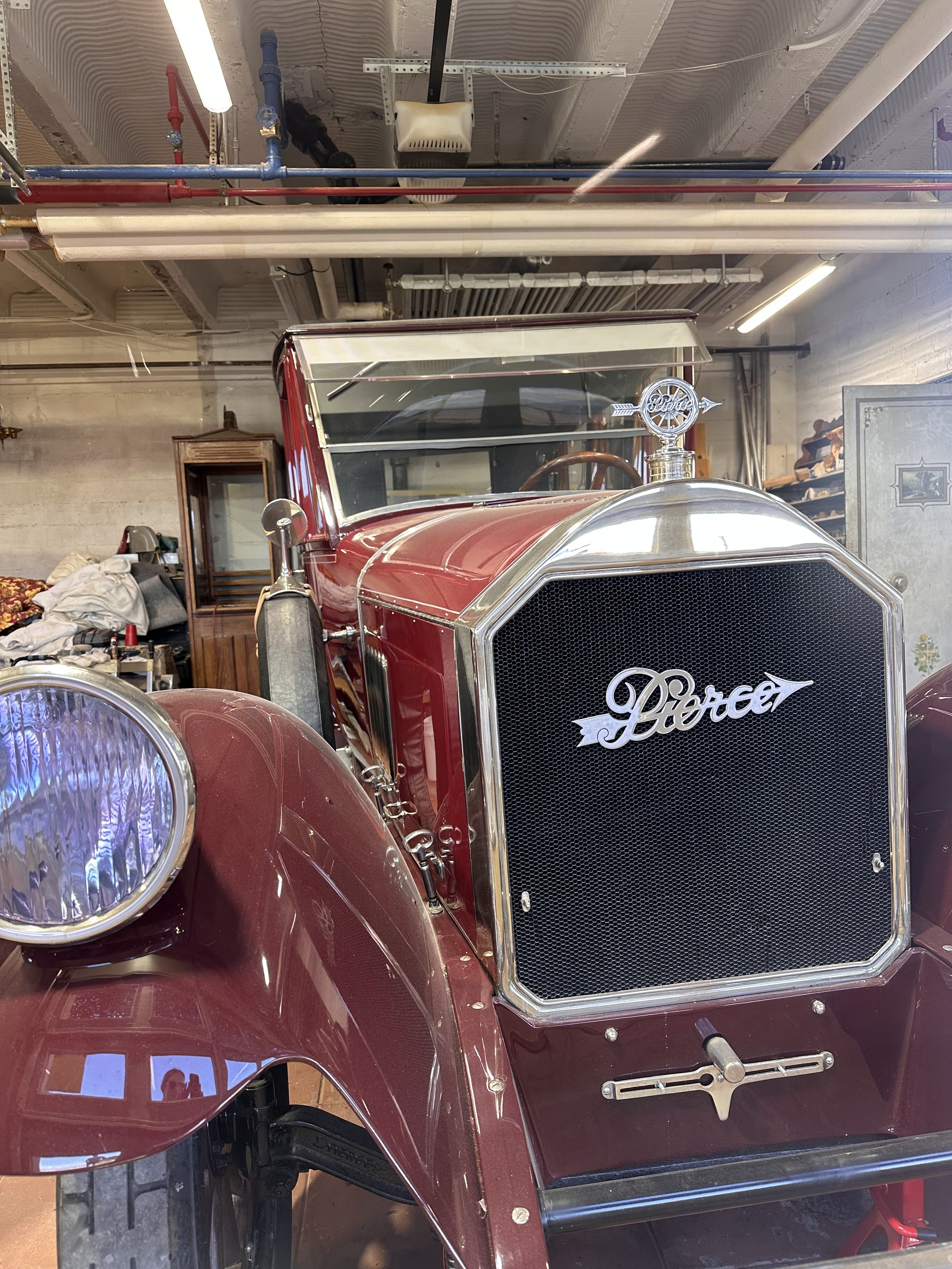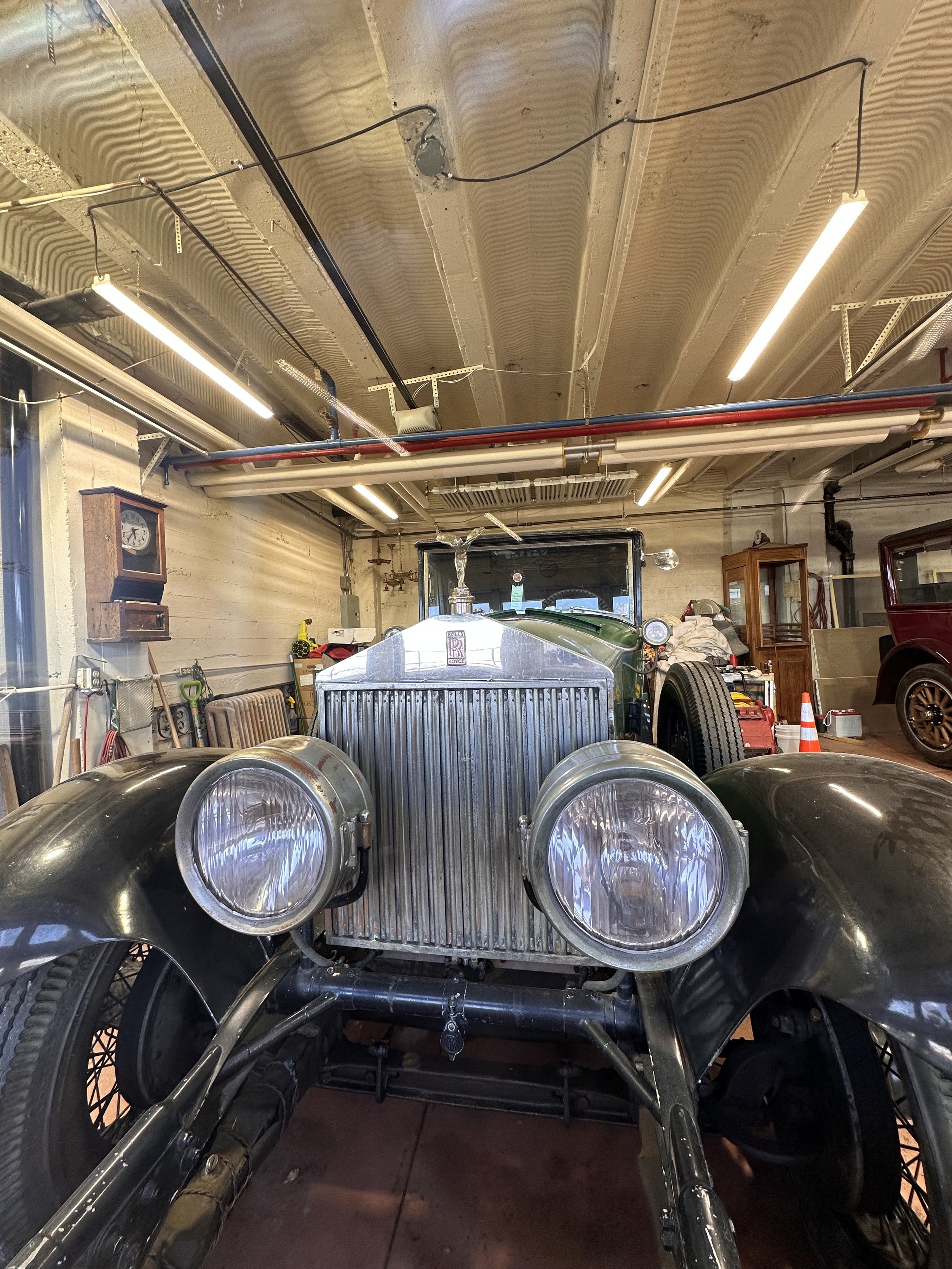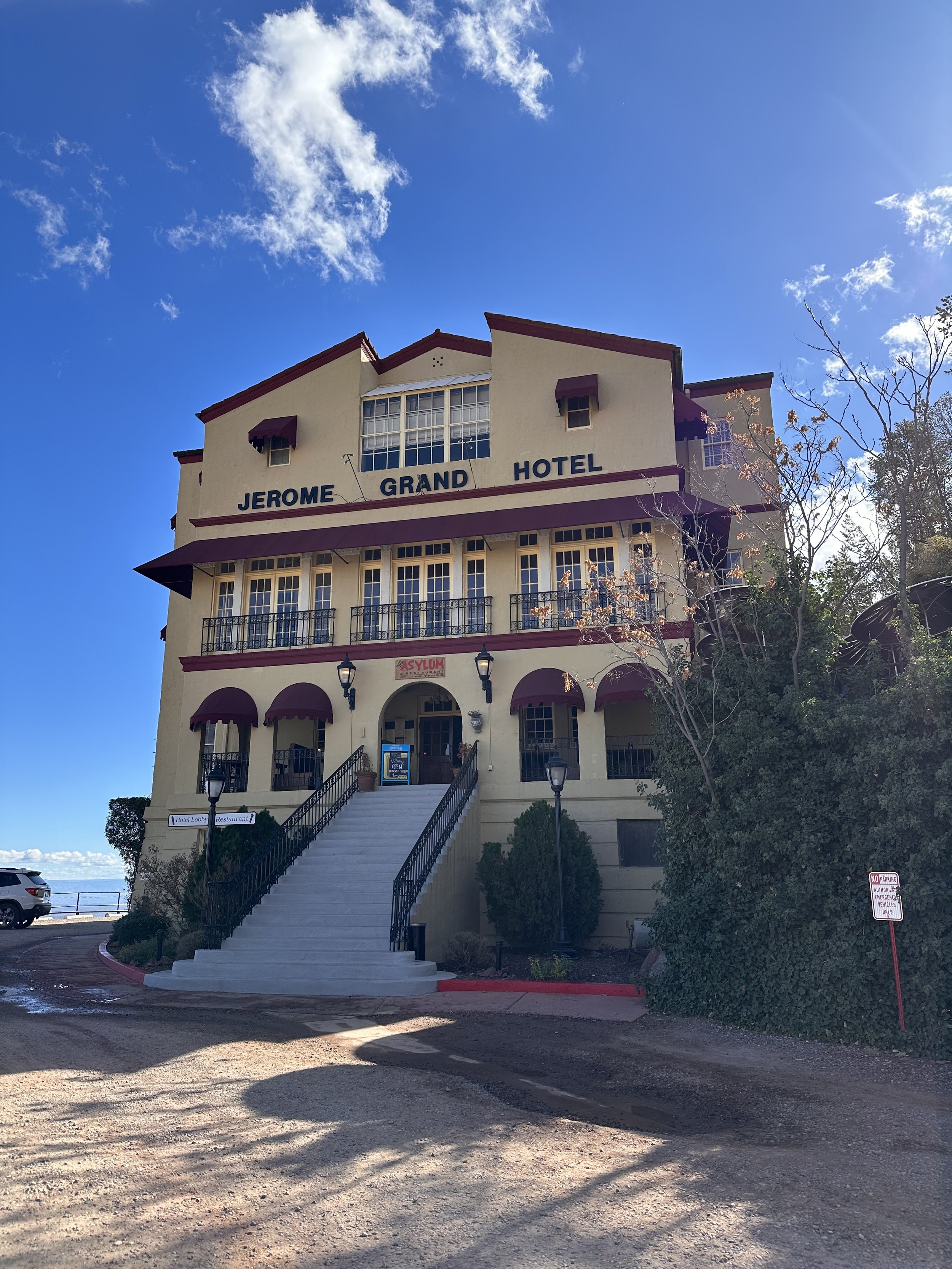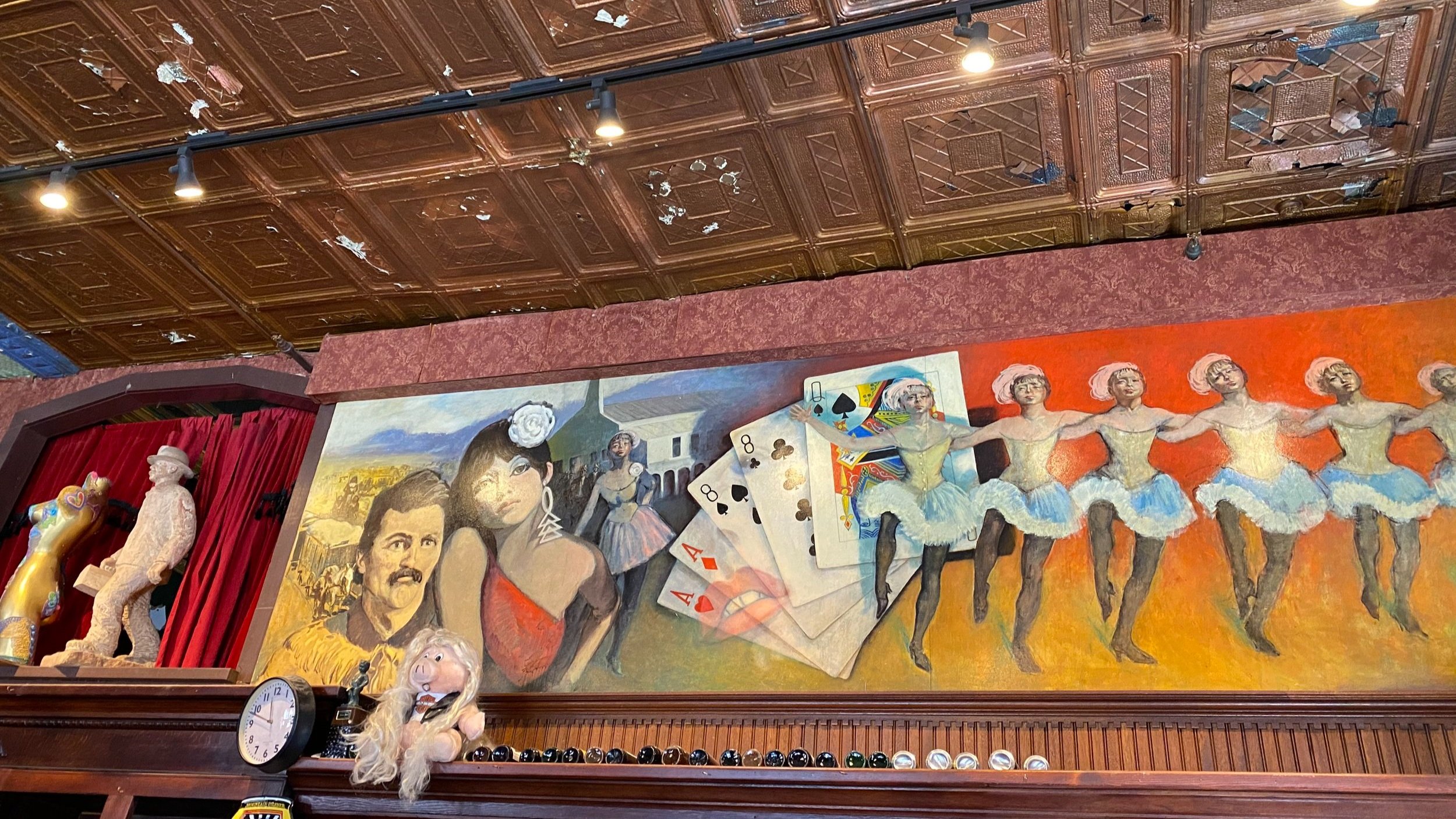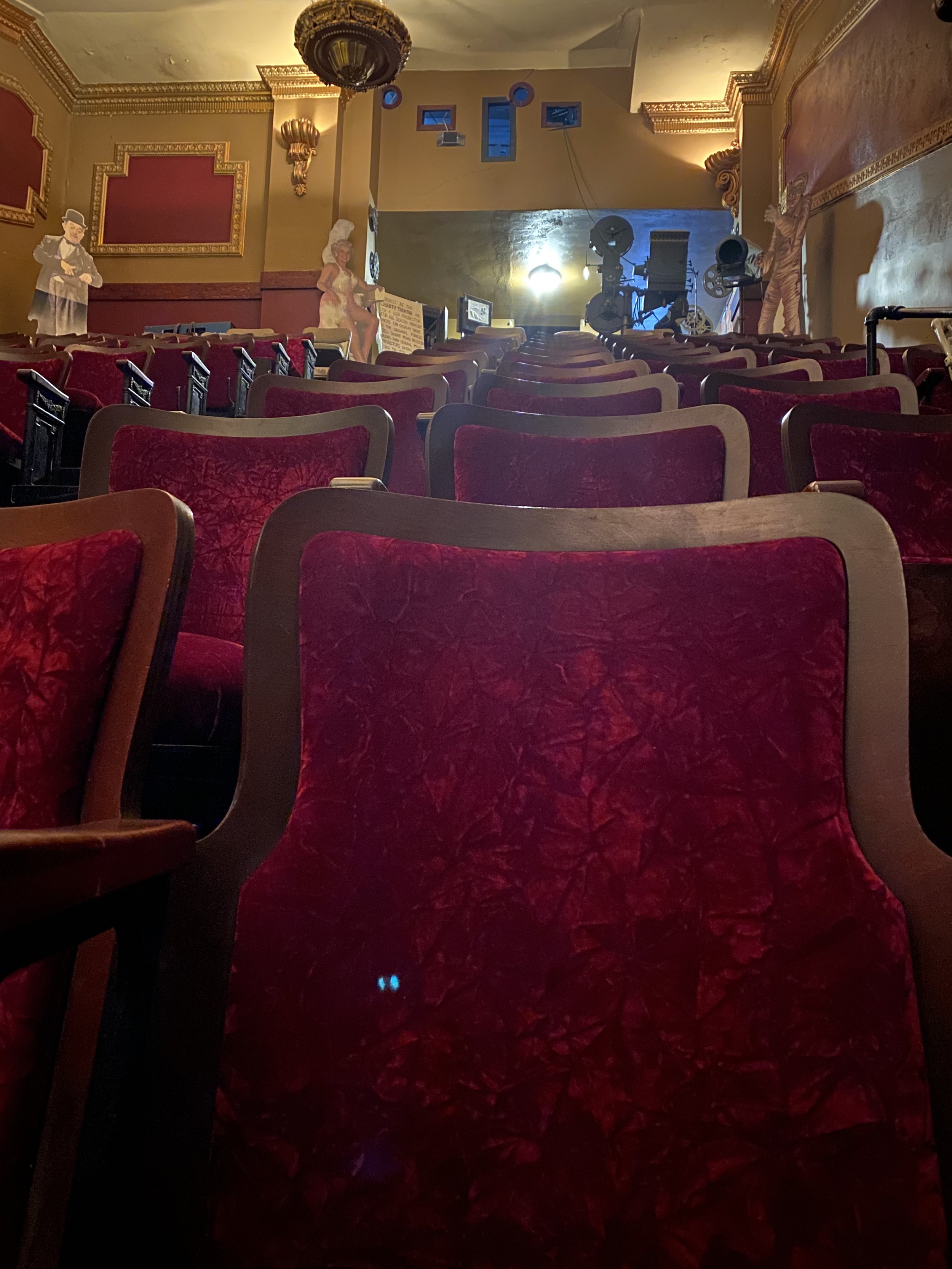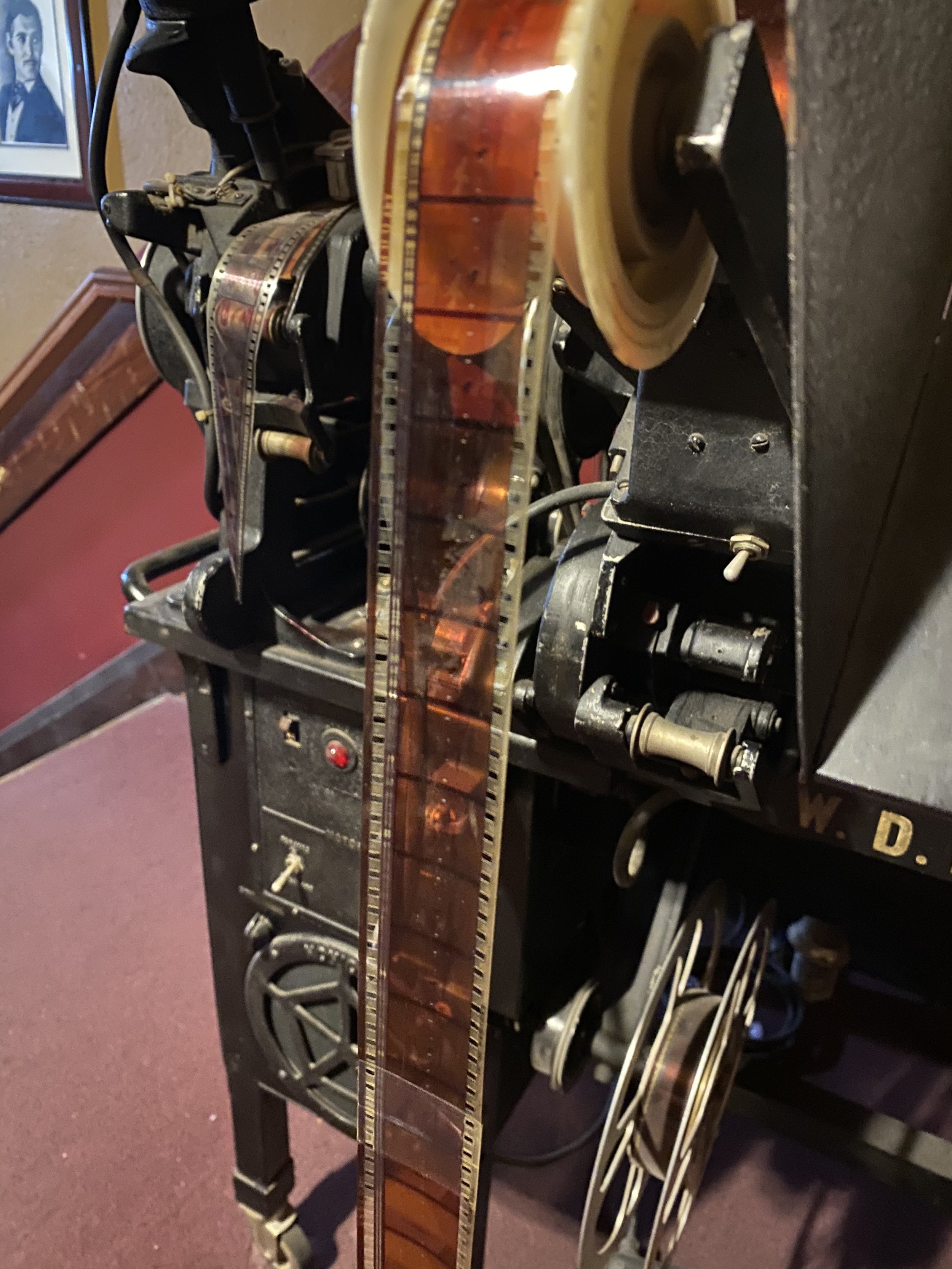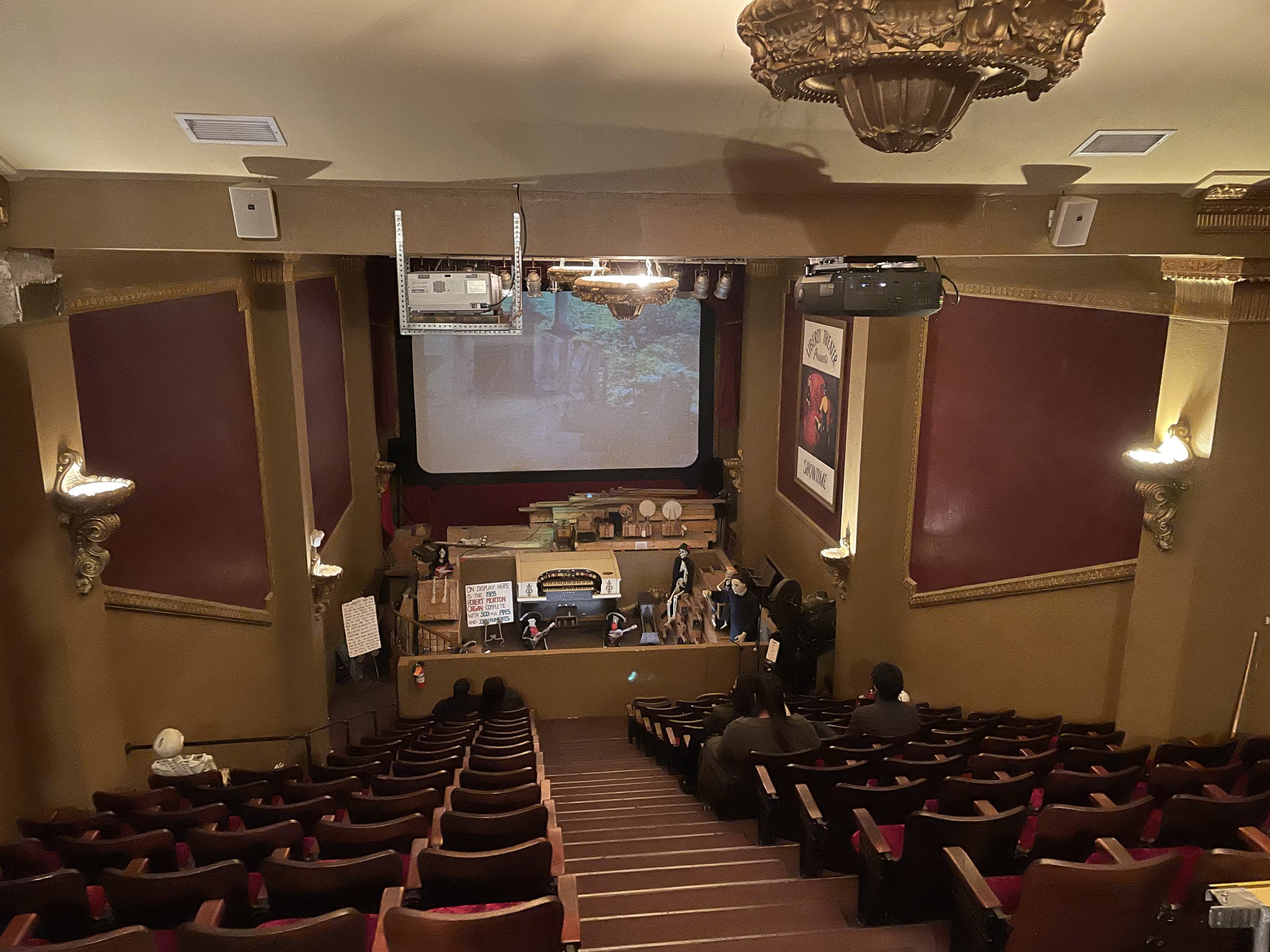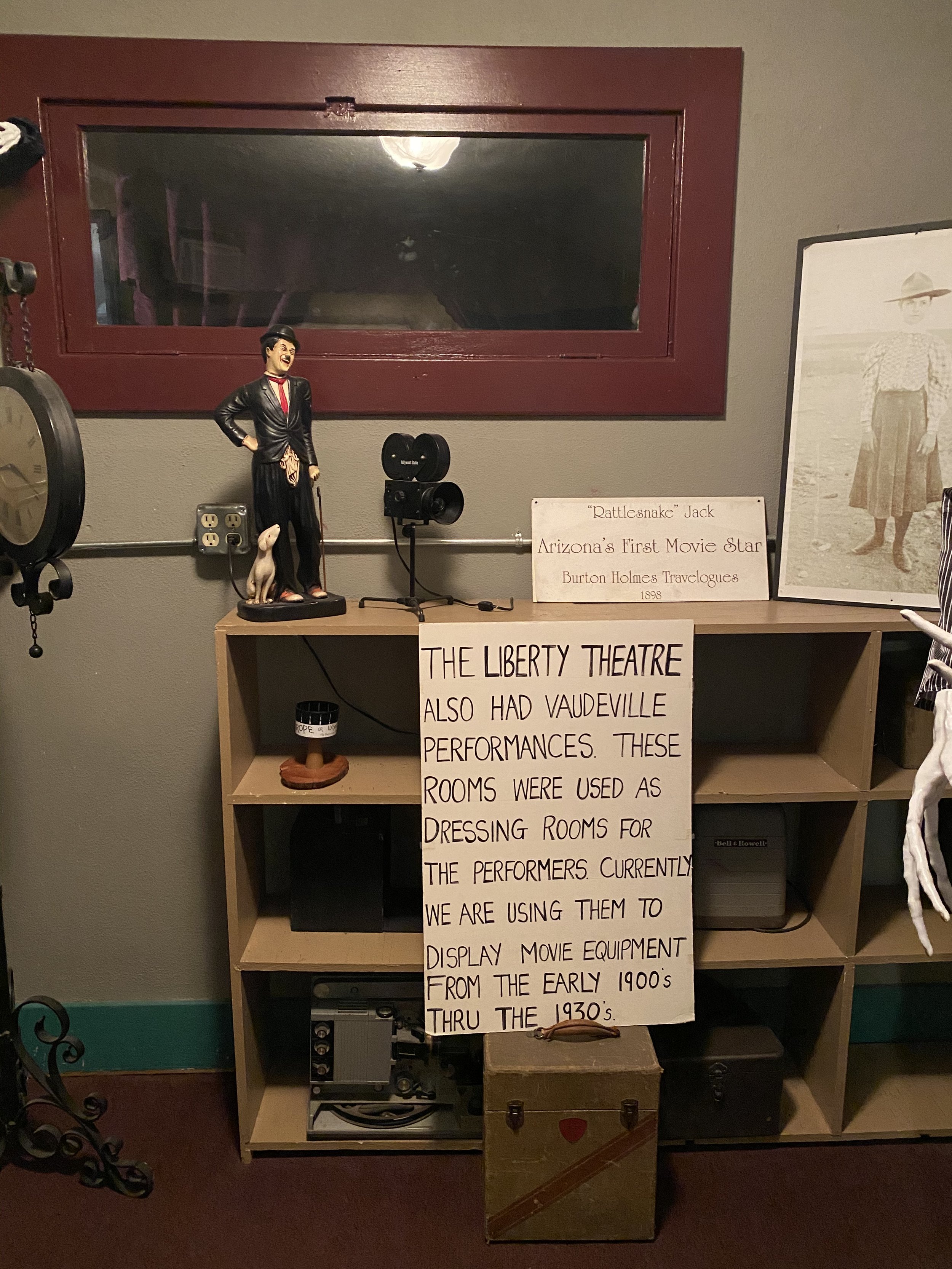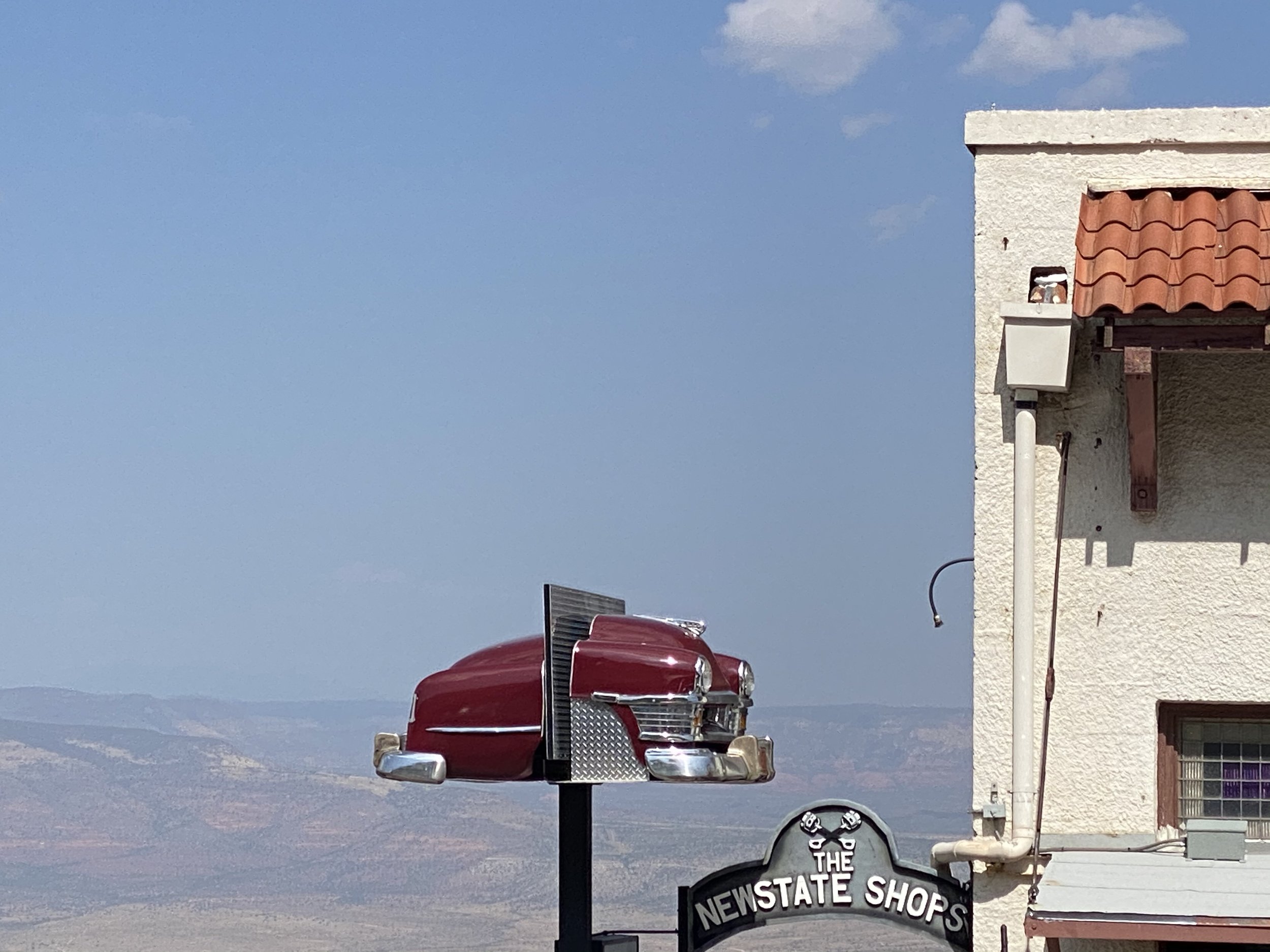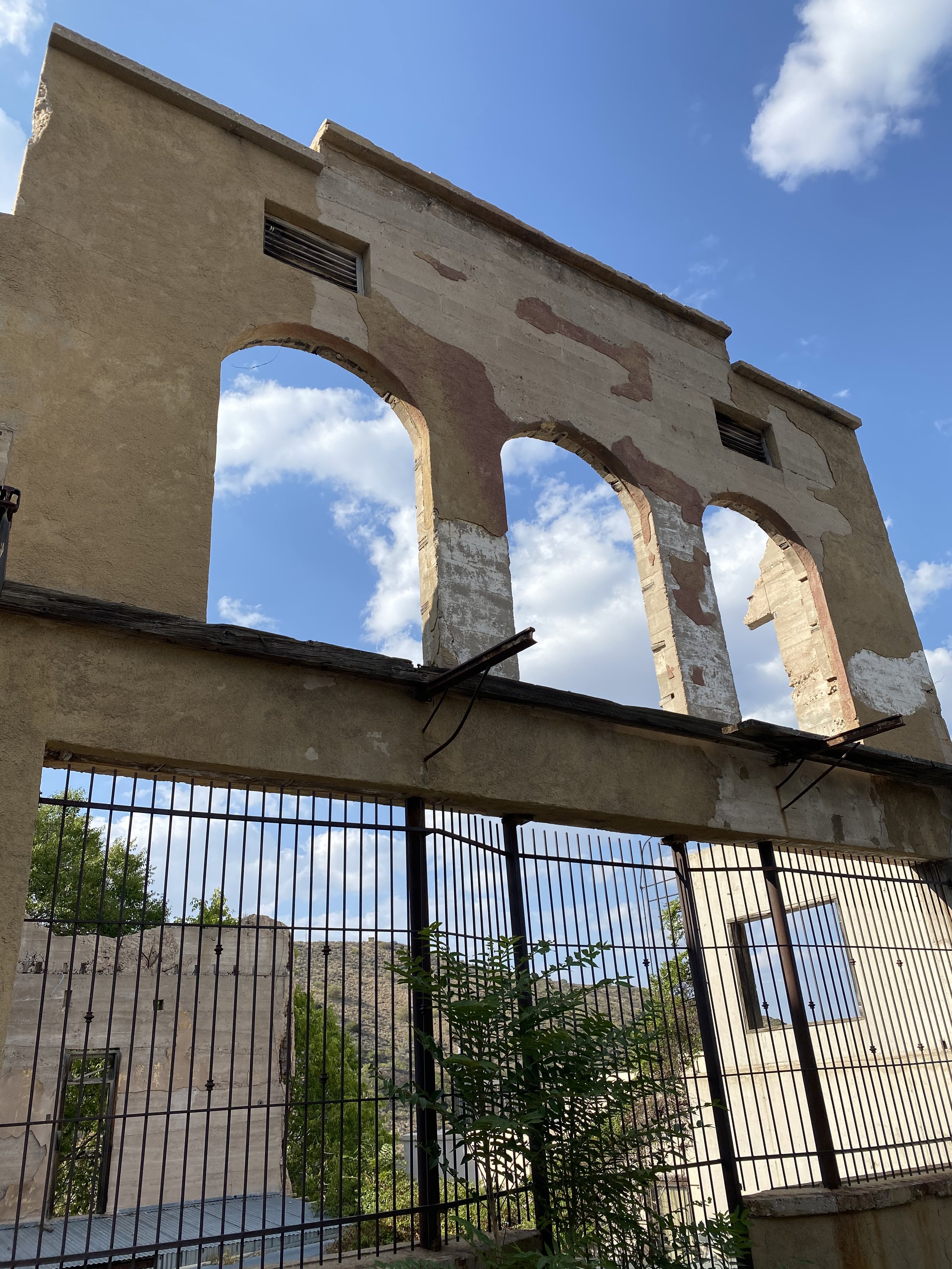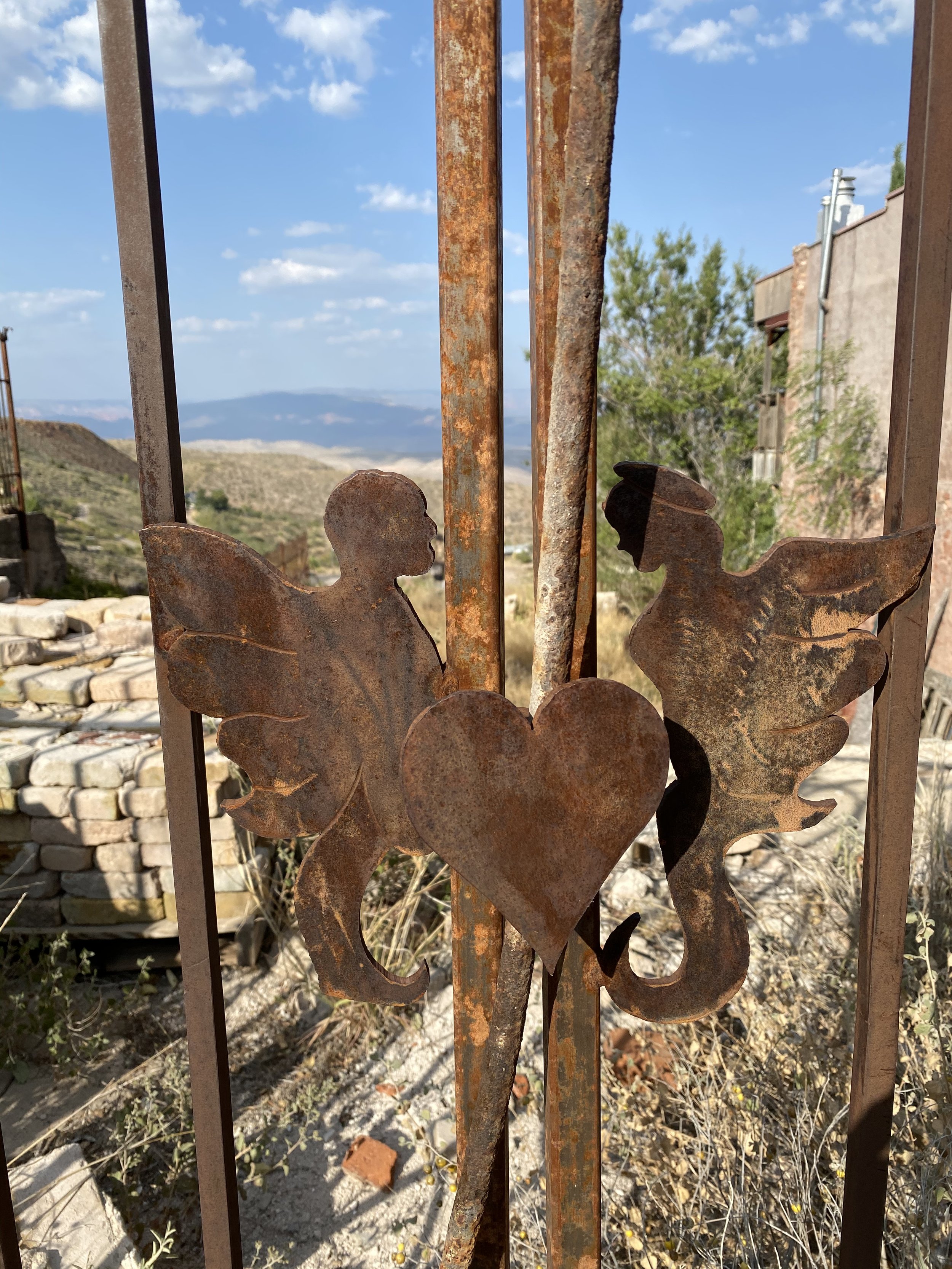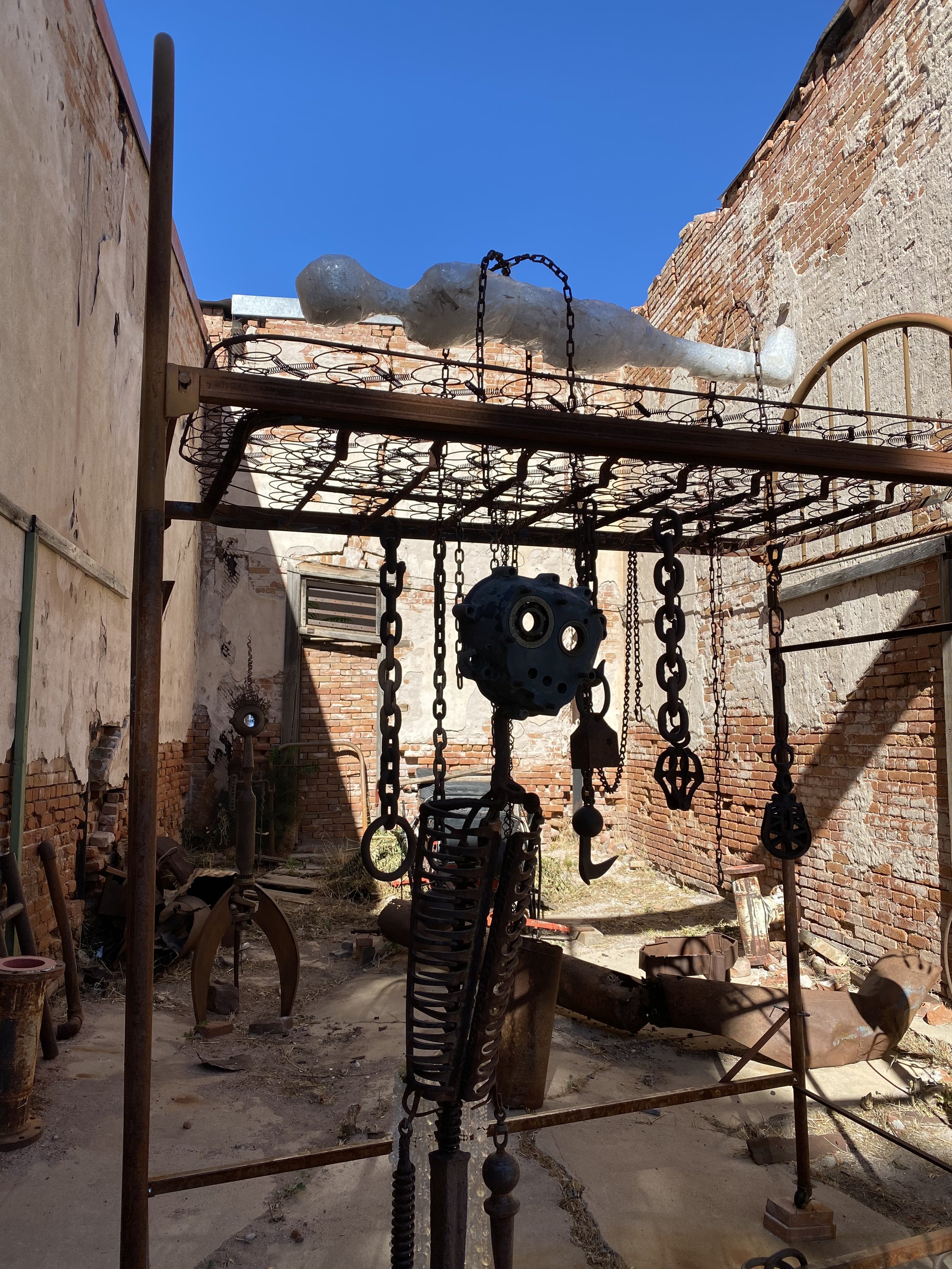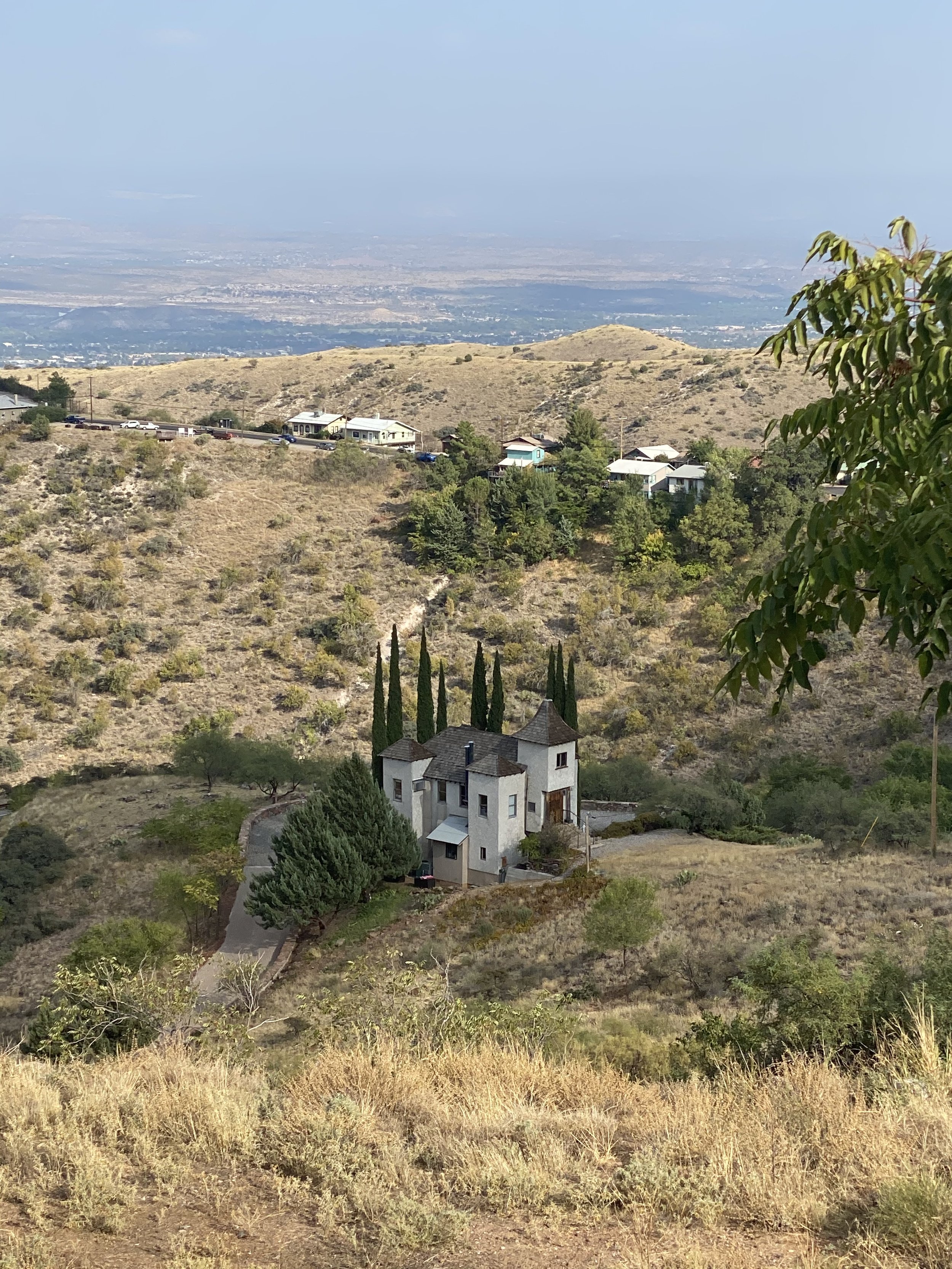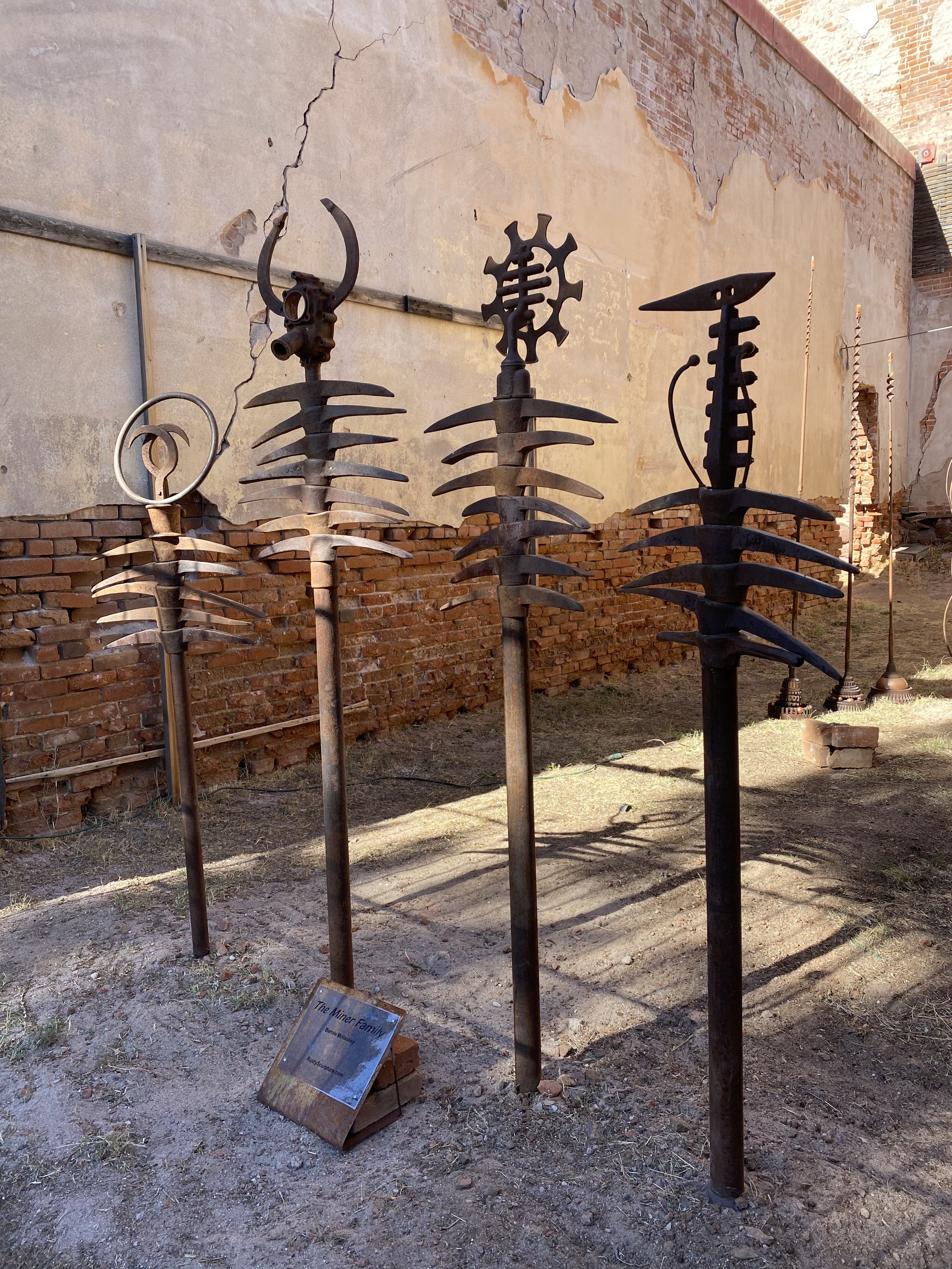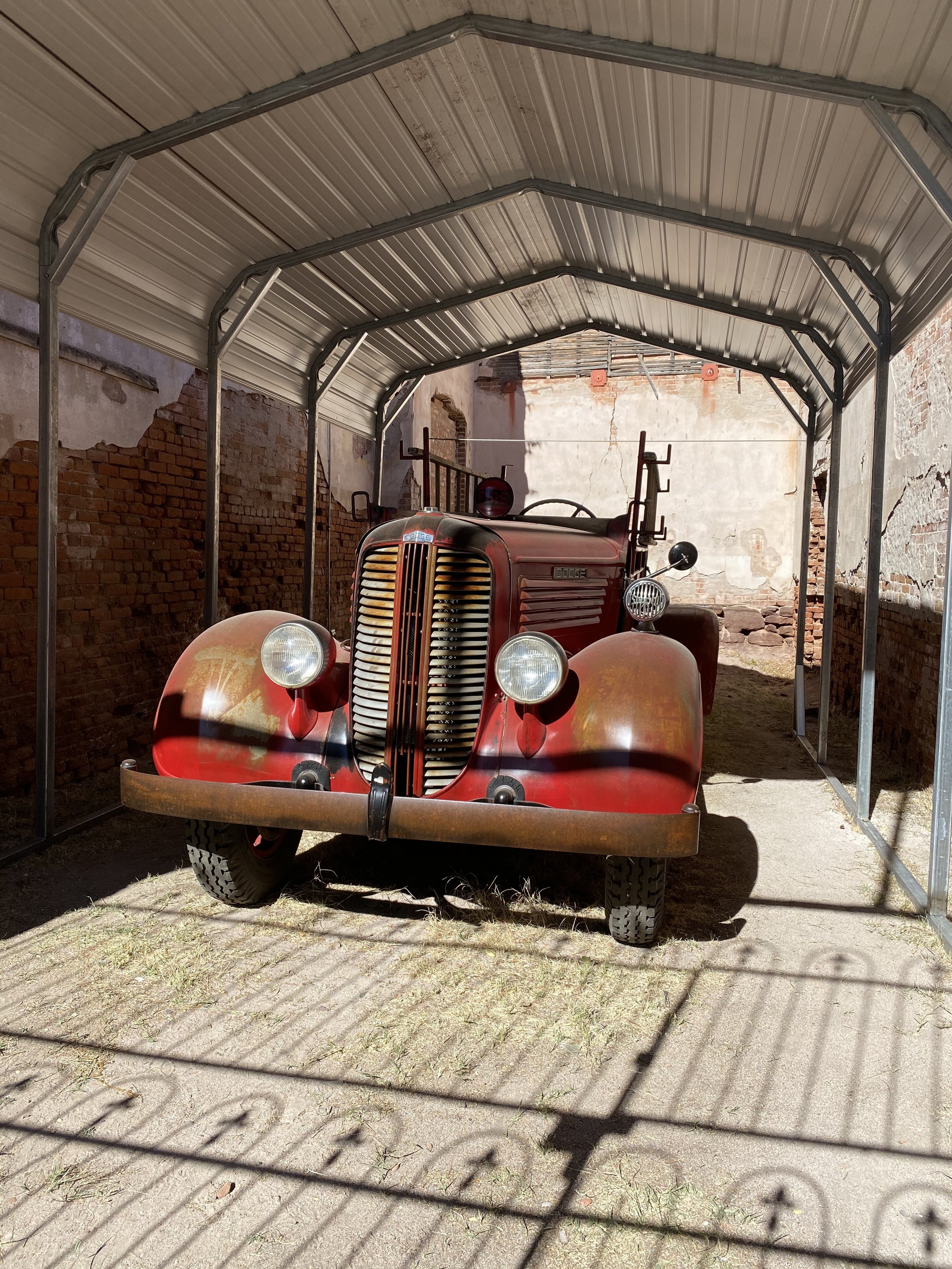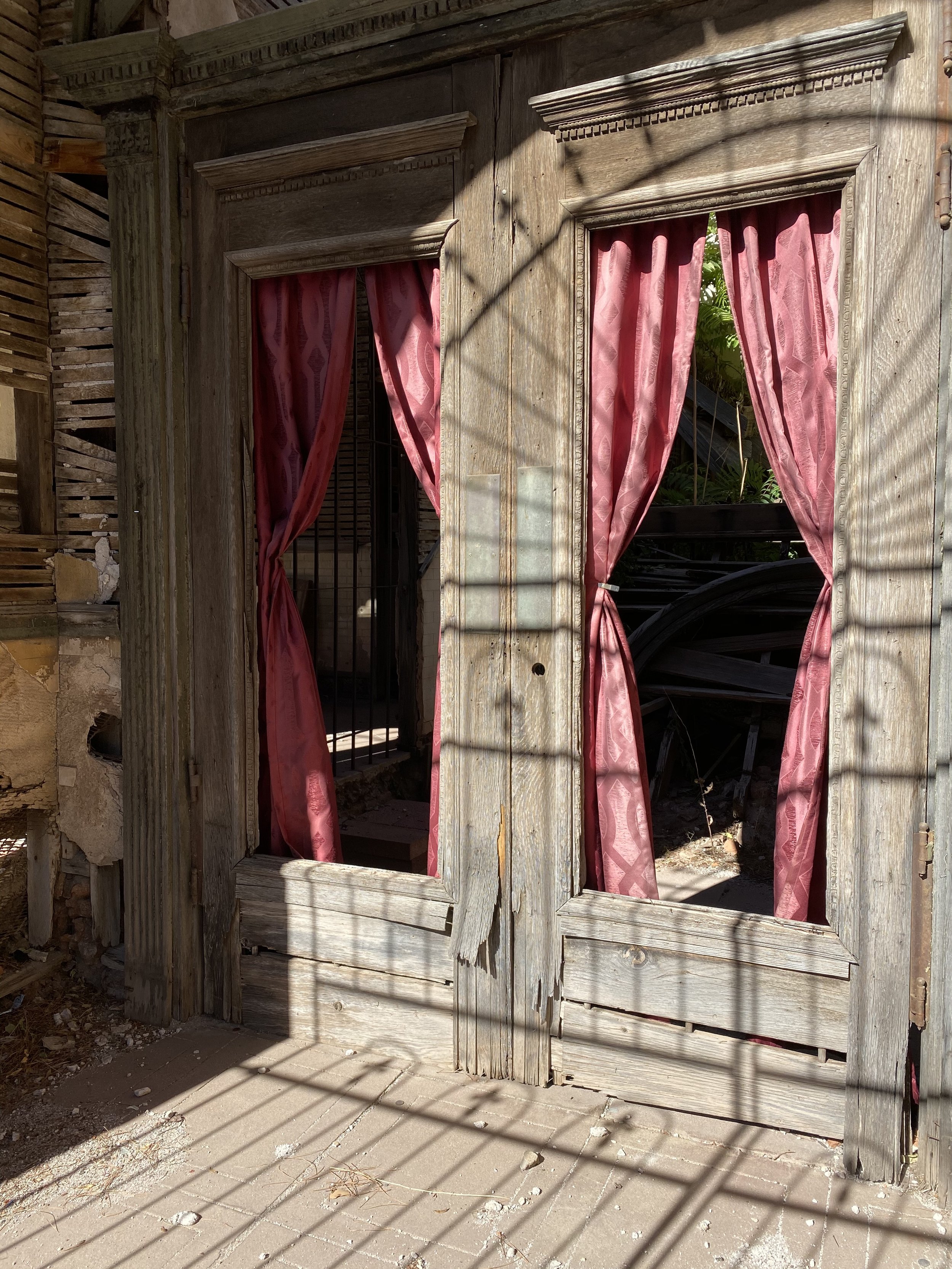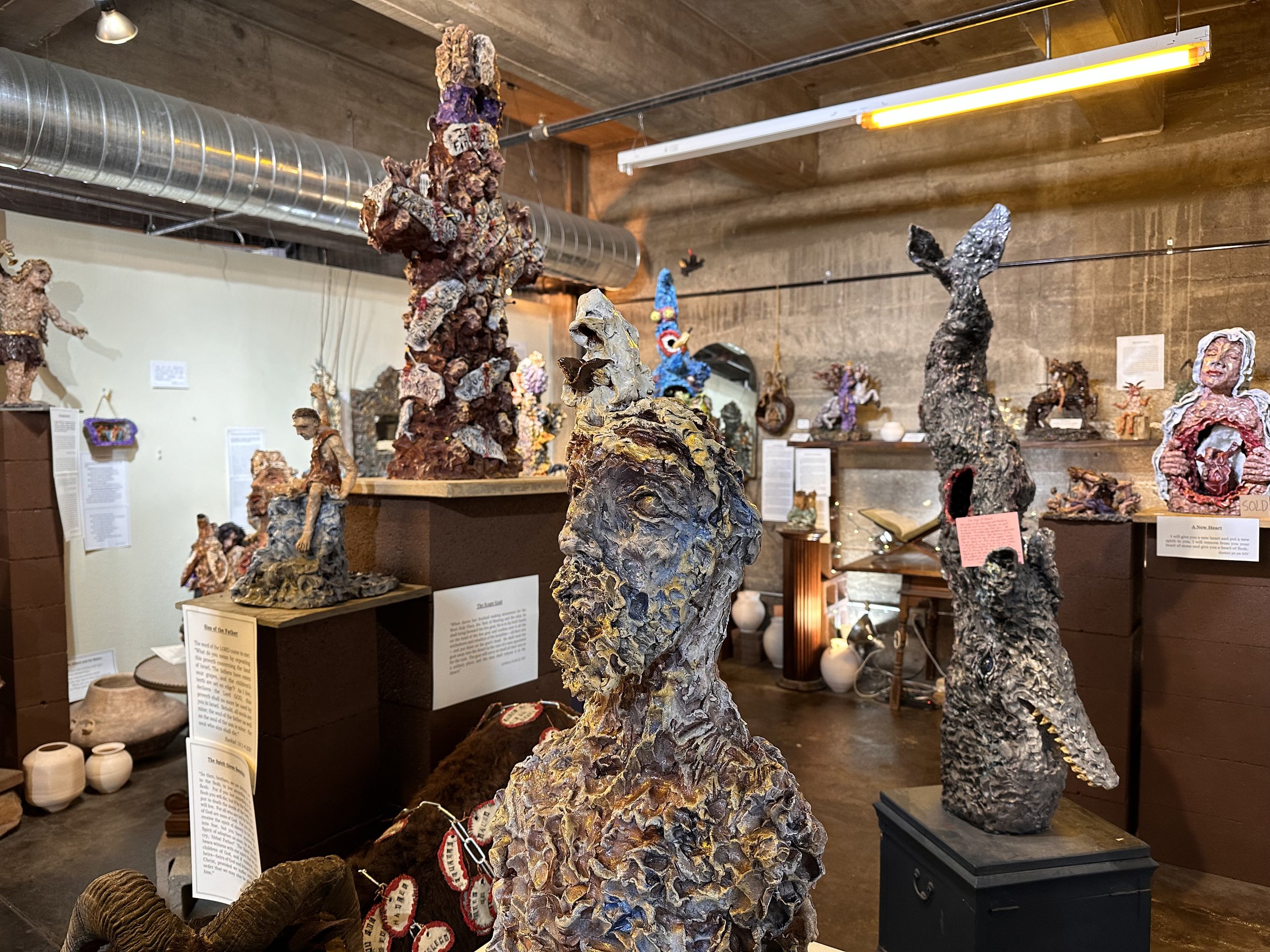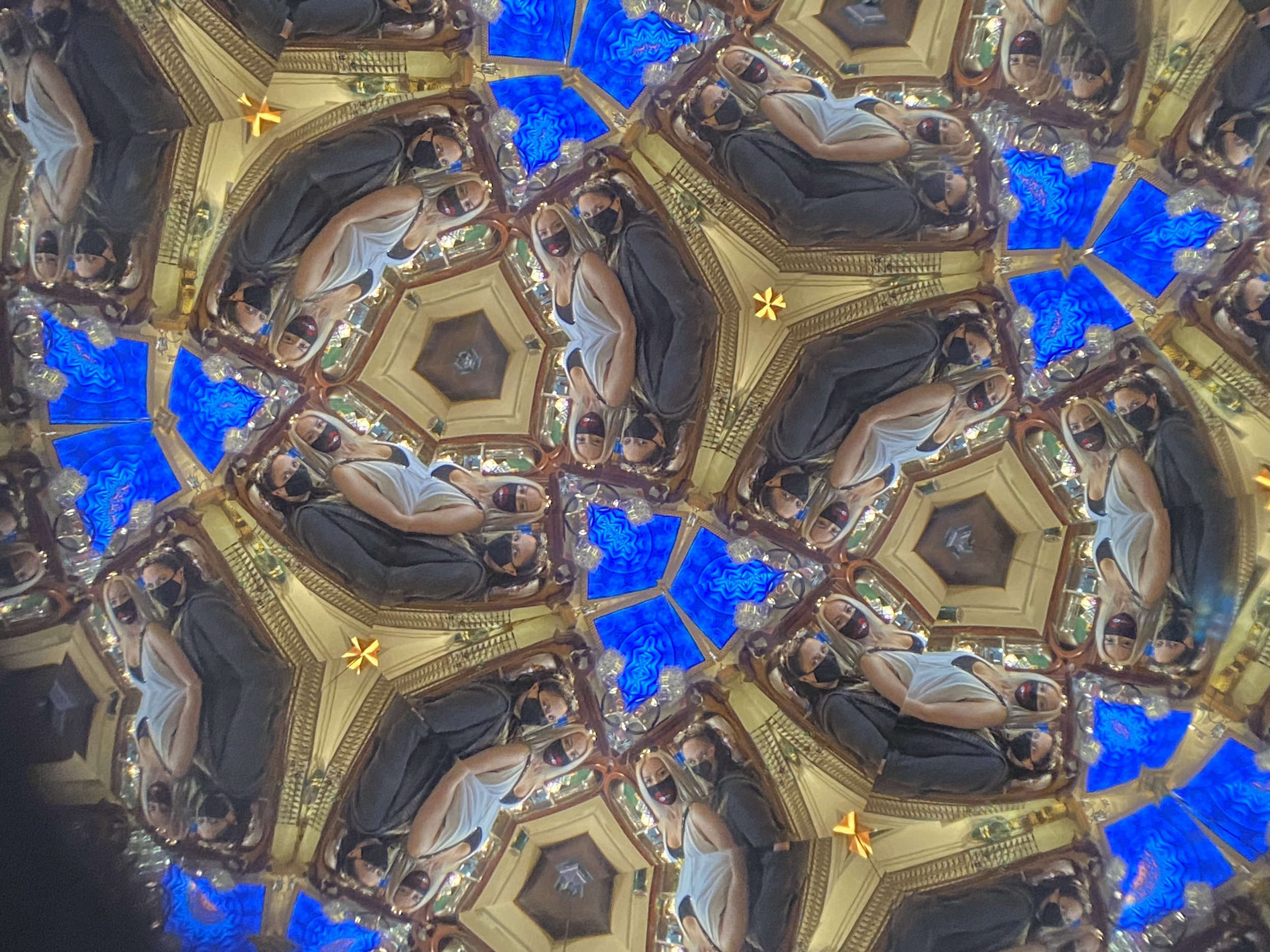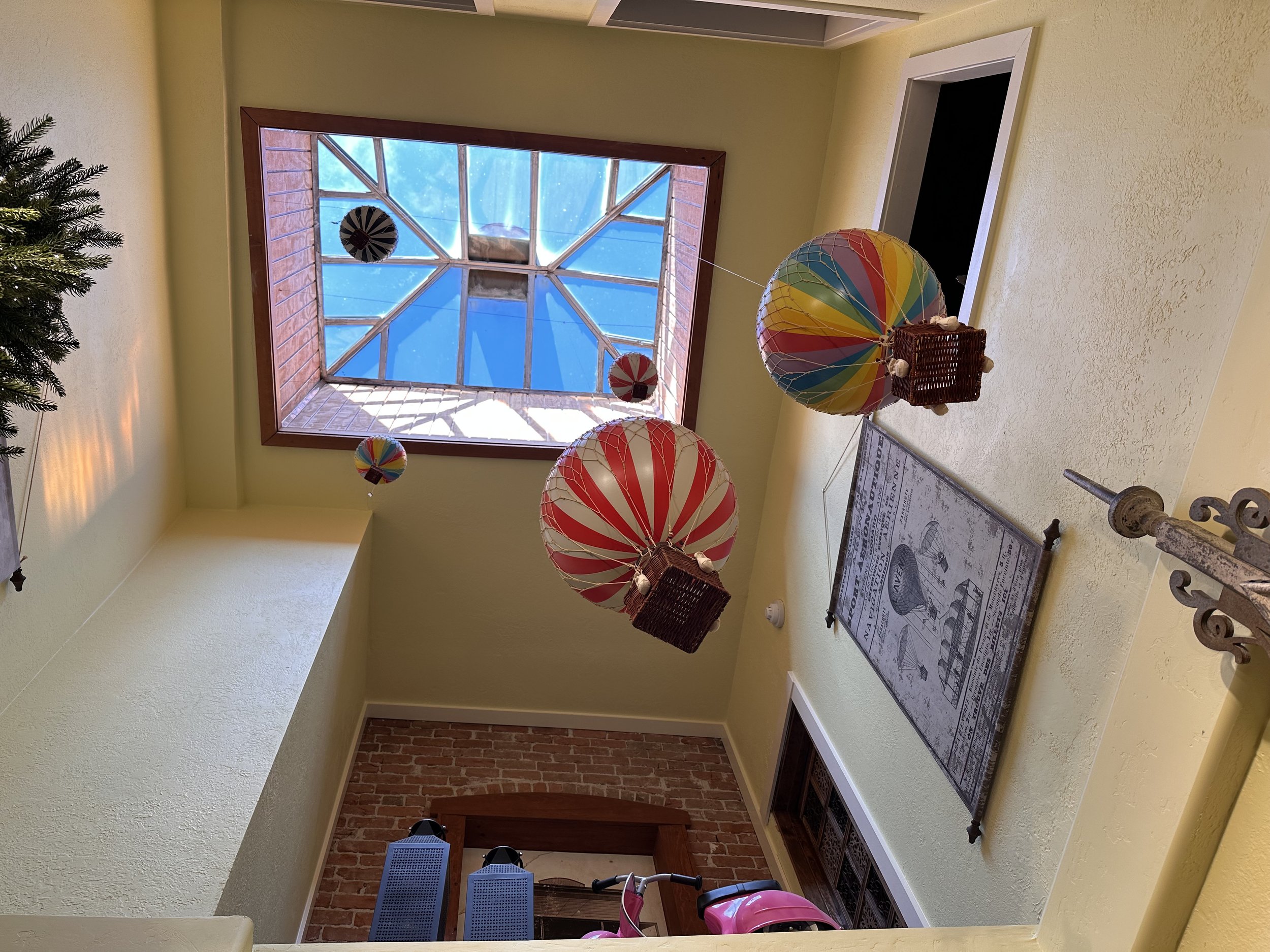Exploring Jerome, Arizona
Update November 22, 2023
Time needed in this town: It’s a day trip, though can make for a great overnight.
The very first time I heard of Jerome, Arizona, was on my and my friend’s trip to Sedona - our driver had pointed it out as a place to visit. He said it was infamous for some of the most gruesomest mining disasters in history (the town is one of the most haunted in the country), the arts, and Maynard James Keenan’s tasting room, Caduceus. When I moved here in September of 2020, I made it one of the first things I toured in my new home state.
The below information is a complete guide of the best places to stay, the top rated places to dine and drink, and all there is to see and do. We’ve also included a summary of the history of this hauntingly cool town!
NOTE: Cottonwood and Sedona are often visited when near Jerome. Click on those links for our guides on those towns.
Jump To:
Where to Stay
Ghost City Inn
Built around 1890 as a boarding house for lodging middle mine management, this building has seen many uses. Although most of it’s life has been spent as a boarding house, this Jerome building served as an ashram as well as a restaurant in prior years.
The building went through a major restoration project in 1994, 2003 and again in 2014. From the Victorian elegance of the Verde View Room to the rustic feel of a north woods cabin in the Northern Exposure Room the owners have made each room special and inviting. The building still carries some of the uneven floors and original beadboard ceilings. All our rooms have private bathrooms, Direct TV, ceiling fans, and air conditioning.
Jerome Grand Hotel
READ THE ENTIRE HISTORY BELOW
The building plans for the 30,000 sq. ft. hospital were confirmed on February 1926, with its grand opening taking place just 11 months later in January 1927. It featured patient call lights, balconies, sun porches, emergency backup lighting, an Otis self service elevator, ice making room, laboratories, X-ray, major and minor surgical facilities, men’s, women’s and children’s wards, private and semi-private rooms, blanket-warming closets, and housing for some staff. In 1930, it was considered the most modern hospital in Arizona and possibly the Western States. The hospital was closed in 1950 and over the years, gained the feeling of having been abandoned.
In 1994, the hotel owner moved in and started working on the hotel conversions/renovations. He said that during the first month, he got the feeling his presence was in question – not sure if he was welcomed or not. In the second month, this “feeling” started to relax and then one day, during the second month, it totally went away. During the following months, there became a “feeling” of a protective nature.
This hotel has been featured on “Ghost Adventures” , and has also been a studied subject with many psychics. The owner says that out of the many visiting psychics over the years, three of them seemed to pick up a number of things both past and present. Two in particular (at separate times about a year apart) said “the Head Nurse” / “the Nurse in charge” was upset with the removal of the desks at the restaurant (which was the main check-in for the hospital, as well as the dispensary). The owner told each psychic the original Dispensary desks were in storage. Later, upon leasing out the Restaurant/Lounge in 2003, the new tenant somehow saw two cabinets stored at the back of one of the garages in the hotel. He asked the owner what they were and if he could use them in the restaurant area. Given permission, the original Dispensary counter-height desks were relocated within a few feet of their original placement. To date, the “Head Nurse” has made no more complaints.
However you feel about spirits, there are elements to this hotel that keep the hospital roots intact:
The elevator (for guests only) is the original elevator for the building. It was on the basement floor that a miner lost his head (see the “Ghost Adventures” clip, below).
The green-ish wall color was once oxidized copper paint. Today, it’s non-toxic to guests, but they chose to keep the standard hospital color.
Want to know the most haunted room? Ask for room 32.
The Connor Hotel
Built in 1898 by David Connor, the Connor Hotel of Jerome has a colorful past. Originally designed with 20 rooms upstairs, this first-class lodging establishment also offered a barroom, card rooms, and billiard tables on the first floor. Rooms were rented on the “European plan” for $1.00 per night. The Connor’s telephone number was 8. The stone foundations were quarried from the hills around Jerome, and the brick was fired in nearby Cottonwood, in the yard of Messrs. Britton and Sharp.
Before the turn of the century, the hotel had burned to the ground twice, along with many other buildings in downtown. After it reopened in August of 1899, it enjoyed a heyday of being one of the finest lodging establishments in the booming mining towns of the West. The hotel had its own bus for delivering guests to the train depot, and was full to capacity much of the time. It was one of the earliest buildings in Jerome to be fully wired for electricity, and each room had a call bell for service. However, in 1931, the hotel closed. David Connor’s son and heir continued to rent out the shops downstairs, but the rooms sat vacant.
In the 1960s and 1970s, the town began to attract counter-culture folks and sightseers giving the hotel its second heyday, though this time, as a low budget flophouse of sorts, which was quite popular. But in 1980, the hotel had to close again due to it not being up to fire code- it wasn’t until the early 2000s all was corrected and the hotel reopened.
The Little Daisy
In 1916, Jimmy Rawhide commissioned a Phoenix based architecture firm to design The Little Daisy Hotel to serve as lodging for employees of his mining company, United Verde Extension. Construction of The Little Daisy Hotel was completed in 1918 beginning its chapter of housing miners in its 40 rooms. Mining operations began to slow in the 1940’s, until the mining boom of Jerome ultimately came to an end in 1953. With it came the closure and the end of an era for the hotel. The roof was removed and anything of value - from furniture to building materials - was either sold for salvage or eventually taken from the property. The hotel, along with the two neighboring properties, was subsequently sold to William Earl Bell, a scientist whose research assisted in the invention of the atomic clock. Bell resided in one of the smaller properties leaving The Little Daisy virtually untouched and abandoned under his ownership. In 1995, Walter and Lisa Acker purchased the property from Bell’s estate while visiting from Montana. They spent the next 12 years restoring it, room by room. The Grooms family purchased it in 2020 and now run it. It’s one of the most luxurious and awe-inspiring hotels in Jerome.
The Miner’s Cottage
Originally the house was built for miners working the United Verde mine, now it's a cozy getaway that's just steps from a revitalized downtown.
The Surgeon’s House
Now at the top of my list of places to stay in Arizona, the Surgeon’s House was built in 1917 for Jerome’s Chief Surgeon. It changed hands many times over and was in need of repairs, until Andrea Prince bought it in 1992 and lovingly restored it.
Where to Dine & Drink
What was once the check-in area for the hospital, is now a restaurant… with some of the best views in all of Jerome. When you walk in, you will see the old check-in desk, a wooden wheelchair, and a few other artifacts from it’s time as something far creepier. There are rumors that ghosts of these patients will inhabit human bodies any time they feel like it, causing a bit of a stir until it decides to move onto another soul.
Need to use the restroom? Just know that the men’s and women’s, combined, was the operating room for those admitted for hysteria.
Before you, run walk after your meal, be sure to walk down the you walk down the hallway, past the restrooms, to see other artifacts and historical pictures.
FUN FACT: There were a lot of in-patients due to exposed Lithium in the area from the mining operations.
Caduceus Cellars
The brilliance of James Keenan comes to life in this tasting room. From the layout, to rock royalty feel, to its impeccable display of merchandise, to its knowledgeable wine consultants and the wine themselves - it’s an immersive experience not easily forgotten. Check out the sneak peek of the tasting room below:
Haunted Hamburger
Michelle and Eric Jurisin bought what was then a dilapidated building. As the renovations began and continued, hammers started going missing. The previous owners asked the Jurisins if they met the spirits yet, noting they like to take hammers. Not too later, Eric went upstairs to finish a project and the door to the entryway slammed with high force, right in his face.
Since the days of renovations, the spirits are still active as ever. There have been reports from staff and guests, saying they have witnessed cans flying off the shelves, and hot water being turned on in the middle of the night. They’ve also experienced distinct smells in the stairwell and even photographs from guests show the vague image of a woman in the same area.
For myself and Blackbeard, the burgers are amazing, as are the milkshakes and the view! Definitely stop by there at least once on your visit.
TIP: The burgers are huge. If you’re not a big eater, definitely share one.
OJ’s Copper Country Fudge
It’s not just fudge, it’s also amazing ice cream! I’ve been here twice and the nostalgia of the old-timey feel, along with such an incredible selection of sweets, makes it a great experience!
The Grapes Restaurant and Bar
It doesn’t look like much, but the wine and food menus are incredible and they are highly Celiac-friendly!!!
The Spirit Room
Located at the bottom of The Connor Hotel, this very old bar offers live music.
Things to See & Do
One of the most awesome things about Jerome is their inclination towards leaving anything and everything as it was throughout its history. Down every alleyway, side street, and even from the main road, there’s a piece of history to stop and see.
Arizona Copper Art Museum
John and Patricia Meinke became involved in copper in 1958 when they saw a few copper molds in an antique store. This inspired them to begin collecting copper and open a store. The store closed in the 1970s as the Meinkes preferred selling copper at antique shows in large American cities. Most of the copper was sourced from Europe. Their son, Drake, joined the family business in 1978.
The family began thinking about sharing their copper collection with the public and made plans for a museum. Drake searched for the best location in the U.S. for two years and finally found a place for the museum, in Clarkdale, Arizona. They had chosen Arizona due to it being nicknamed "The Copper State" the largest copper producer in the U.S., while Clarkdale was a city known for its past as a copper smelting town producing billions of pounds of copper, silver, and gold. The old high school was for sale, but in poor condition, though was purchased in 2002. The restoration of the building and incorporation of their two existing collections began in 2004. The high school operated from 1928 to 1960 and sat virtually empty from 1960 until 2002. After eight years of restoring the building and preparing the exhibits, the museum opened in 2012, during the centennial celebrations of both Clarkdale and Arizona. In 2022, the museum purchased 901 Main St., formerly Miller's Market, a building on Clarkdale's main street, to expand of their display area.
Audrey Headframe Park
In 1918, the Audrey shaft was finished as a component of a comprehensive operational strategy that aimed to increase the quantity of high-grade ore extracted, minimize the risk of fire (which was a significant concern due to the sulfur-rich soil), and enhance the safety of workers. It is 640 ft. taller than the Empire State Building and is the largest wooden headframe still standing in Arizona. At the Headframe park, visitors can stand on glass, above the 1,900 foot shaft.
Gold King Mine & Ghost Town
In 1890, The Haynes Copper Company sunk a 1200-foot shaft into the middle of one of the richest copper deposits ever discovered. Ironically, they found no copper but instead, gold, which sparked the creation of the small boom town of Haynes - the remnants of which an intriguing mix of ghost town and mechanical hobbyist’s paradise.
In the late 90s, Don Roberston purchased the town and the crumbling buildings (including the mine shaft) While the Gold King Mine Ghost Town boasts a disused mine shaft and antiquated buildings, From that point on, he turned it into not just an attraction, but a “gear head’s paradise”. This includes antique mine equipment that is now functional (for entertainment only), as well as a turn-of-the-century sawmill (still actively filling orders), a 1901 blacksmith shop, classic gas engines, and a wide array of restored antique cars, including vintage trucks and race cars. The open-air museum also features resident animals—including donkeys, rabbits, goats, and chickens—looking for treats and scratches from visitors.
Jerome Artists Cooperative
The Jerome Artists Cooperative Gallery has been in business, in a historic building, in the middle of town, since 1996. They normally have about 35 local artists as part of their group, each displaying their art (in different mediums), working shifts, and keeping their business going. Anytime you visit the gallery, the people working there are artists – ask about their work!
WHERE TO FIND: They are located in the old Hotel Jerome. Opened in 1917, the hotel is constructed of poured-concrete and featured amenities, such as a telephone in every room, a billiard room in the basement, and a shoe shine parlor.
Jerome Blast Furnace
On your way down to the ice cream shop (see below for drinking and dining options) is one of two Blast Furnace Historical Markers, constructed in 1888 on the Hampton Lode, United Verde Copper Company Mine by W. A. Clark. These furnaces could blast 60 tons of ore in one day and were extremely dangerous to operate.
The inscription on the furnace sign reads, “This blast furnace was in use in 1882. The smelter site at that time was where the big open pit is at present. This little furnace used coke for fuel. The nearest source of supply was Wales, GR. Brit. More than half way around the world in travel distance! Small sailing vessels carried the coke across the Atlantic Ocean and around the Horn of South America to San Francisco. From there, it was transported by railroad to Ashfork, Arizona, where it was loaded onto mule drawn freight wagons and hauled 60 miles over the mountains to Jerome. The production of this furnace was about 8,000 lbs. of copper per day compared to later smelting operations which produced 457,525 lbs. per day or 142,290,460 lbs. during the peak year of 1929.”
Jerome State Historic Park
The view from the park
Jerome State Historic Park is a state park of Arizona, featuring the Douglas Mansion, built in 1916 by a family of influential mining entrepreneurs in Jerome. The museum is now located in the mansion.
There are some great artifacts in that museum that cover the history of mining, as well as the townspeople, there. Also, there are amazing views of the surrounding area!
Liberty Theater
For $5 pp, climb the old stairs to the theater above. Sit down in one of the red velvet chairs and take in the black and white film about Jerome, playing on a continuous loop. Then, head to the top of the theater and take a look at the old projectors. After that, head down the back staircase to see the oddities and curiosities that are held in the theater’s museum,
Sliding Jail
The old jail building can be found more than 200 feet from where it started, following a slow slide down the mountain.
Although it’s been nearly a century since its use, it certainly spent some time in high demand. An old copper mining camp, Jerome was incorporated in 1898 and like many Wild West towns, soon garnered a reputation for boozing, brawling, and brotheling. Its bad reputation was enough to briefly garner it the title of “Wickedest Town in America.” The gambling and gun fights continued through Jerome’s World War I boom, when there were as many as 15,000 people living and working there. Today, it has only about 400 inhabitants and quite a different temperament.
The concrete cell block was once part of a wood and tin building, but pulled away from the rest of the structure after some underground blasting in 1938 shifted the ground beneath a substantial portion of the town. Although the jail was deemed unsafe for prisoners and evacuated, its gradual slide down the hill continued unchecked until other buildings had been secured.
Take a History Tour
Arizona once had a booming mining industry, known for copper and gold. Discover Arizona’s old mining history on a walking tour of the historic mining town of Jerome. Join a small group and explore the mining town stopping at key locations like the sliding jail, that slid off of its foundation into the street, as well as the mining museum.
Wishing Outhouse
What was once the floor of the Bartlett Hotel has now become a tourist favorite of throwing coins into toilets and outhouses, below. It raises about $6500 a year for the historical society.
Wander
When you wander, you see some of the best/hidden things you may otherwise have ignored. Check out my slideshow below:
Where to Shop
There are so many fantastic artists that have set up shop in Jerome, so you can find virtually anything. But, what this town is mainly known for are copper and iron works.
Copper Mountain Antiques
As seen on “Antiques Roadshow”, as well as in numerous magazines, Copper Mountain Antiques is one of the most amazingly large copper antiques dealers in the country. While some of it can be overpriced, there are some great finds in there. Personally, I walked out of there with a hand-hammered copper tray and 6 plate chargers.
Firefly
They have amazing iron works, candles, rugs, and so many beautiful one-of-a-kind pieces for your home. I walked out with two hand-painted outdoor iron tiles.
Jerome Bible Art Museum
Janie is an incredibly talented artist whose mission is to bring The Bible to life, via her art. In chatting with her, she told me she realized the scenes she was creating (snapshot below) weren’t resonating with people as well as the animals were. She makes these adorable animals by creating pinching together pieces of clay, then hand-painting them. You can buy these at the store in the New State Shops (around the left corner and down the stairs from the post office) or at her art studio.
Mooey Christmas & Udder Things
I LOVE Christmas stores and this one is so awesome I’ve been back twice. They have some of the most unique Christmas decor I’ve yet to see anywhere else.
Nelly Bly Kaleidoscopes
An often forgotten past time among certain generations, Nelly Bly Kaleidoscopes bring back the nostalgia of spending hours watching beautiful designs come to life through a tune. All handmade (and rather pricey), it’s worth popping into the store and taking a look. They also have some amazing iron works for sale.
If you head next door (the passthrough in the middle of the shop), you will discover a lot of curiosities for sale that make great coffee table pieces!
TIP: Be sure to go to the far right corner of the store (to the right of the cash register) and look up. It gives you a glimpse into what the building was like before it was modernized.
New State Shops
If you are facing the post office, on your left, you will see a sign pointing to a downstairs area that includes the Jerome Bible Museum, as well as a few shops. a cafe, and a tiny museum. It’s worth checking out -especially if you’re interested in what Jerome was like in the 1920s and 1930s!
Pura Vida Gallery
If you want traditional “Arizona Artsy” for your home, this gallery is the place to shop.
Puscifer The Store
Adjacent to James Keenan’s Caduceus Tasting Room, the Puscifer store is an homage to his two other bands, Puscifer. It’s part record shop, part tasting room (with gelato and charcuterie boards), part store, part barber. It’s one of the liveliest of places to explore.
Queen Bee Crystals
I absolutely love this place. Whether you’re a first time crystal buyer or are experienced, you will notice they have something for everyone, and at a reasonable price.
Its Haunting History
As I’ve gotten older, the fascination with the paranormal in abandoned/small mining towns has grown and that’s in part to the rich history these towns possess. No matter which of them I’ve visited over the years, there’s something fascinating about the stories contained within the walls of each still-standing building that makes you feel as though you’ve been transported back in time. In Jerome, it doesn’t matter if the building is on its last stilt - nothing is torn down, providing you a chilling, yet up-front-view of just what life was like during the late 1800s - early 1900s.
To get the best education of the town, I hired Dave of Ghost Town Tours, whose family has lived in Jerome for generations. His knowledge of the history of this town, coupled with his colorful story-telling, made my next three hours go by in a blink. Below are some fascinating historical highlights:
THERE ARE REPORTS OF HEARING KEYS TRYING TO UNLOCK DOORS, ITEMS MOVING AROUND IN THE ROOMS, HOSPITAL SOUNDS…
William A. Clark discovered the rich abundance of copper (largest in the world), gold, lead, zinc, and silver on Cleopatra Hill, in 1876. For the next 77 years, the mines produced 33 billion tons of the minerals which equated to roughly $1 billion.
With his purchase of United Verde, and his knowledge of mining in Montana, Clark brought his business partners from New York to help invest in the town that became their secretary’s, Eugene Jerome, namesake.
The town expanded so rapidly that by 1883, it had a post office, a school house by 1884, a public library by 1889, and a railway in 1895.
By 1900, the town was fully functioning with electricity, phone lines, a church, fraternal organization, and brick buildings. It was also said to “thrive” on prostitution (the town was 78% male), alcohol, and gambling - this earned them “the wickedest town in the west”.
Mining for copper was so dangerous that oftentimes, massive explosions would take place far underground and fires would burn for years. One such example was in 1905 when a United Verde mine was flooded with water and caused one of the biggest mining explosions in history. A dozen miners were killed 300 feet below ground that day. In 1918, mining companies switched to pit mining to avoid future dangers.
In 1926, United Verde built a solid hospital which is now the Jerome Grand Hotel - the most haunted hotel in the world.
In 1938, another powerful blast slid the jail about 226 feet down the hill, which is where it still stands today.
Mining injuries were gruesome and if a miner lost an appendage, he was treated until he could walk out of the hospital, then given a one-way ticket out of Jerome.
Because of the explosions, an abundance of Ammonia was released into the air, which caused deformities and delirium. It was common to walk down the street and witness glassy-eyed people talking to themselves.
Common paranormal sightings and experiences:
The sliding jail - A little boy that was stuck in the jail as it slid down hill (people have reported extreme sadness coming over them).
Connor Hotel - A pissed off woman who suspected her husband of cheating and threw Carbolic acid in the suspected mistress’ face. She tends to turn on radios, lights, and televisions at random times, and will also appear in hotel rooms, sometimes for hours.
Jerome Grand Hotel - There are reports of hearing keys trying to unlock doors, items moving around in the rooms, hospital sounds, and one delirious woman who roams up and down the now inaccessible balcony.
Liberty Theater - A German woman was fighting with her boyfriend and went in the theater to cool off. During a particularly loud scene in the movie, her boyfriend came up behind her and strangled her to death. Some men who visit the theater report that they feel like they are being choked until they leave, others feel extreme sadness.

